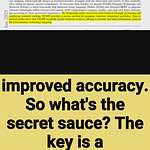Self-supervised techniques and dual-layer architecture drive this new technique ASLS (Adaptive Self-Supervised Learning Strategies) to improve on-device LLM personalization performance.
📚 https://arxiv.org/pdf/2409.16973
Original Problem 🔍:
Personalizing large language models (LLMs) on-device faces challenges due to heavy reliance on labeled datasets and high computational demands, limiting real-time adaptation to user preferences.
-----
Solution in this Paper 🧠:
• Introduces Adaptive Self-Supervised Learning Strategies (ASLS)
• Dual-layer approach:
- User profiling layer: Collects interaction data
- Neural adaptation layer: Fine-tunes model dynamically
• Leverages self-supervised learning techniques
• Enables continuous learning from user feedback
• Minimizes computational resources for on-device deployment
-----
Key Insights from this Paper 💡:
• Self-supervised learning reduces dependence on labeled data
• Real-time model updates improve personalization efficiency
• Adaptive mechanisms lower computational requirements
• Combines user profiling with neural adaptation for enhanced performance
• Continuous learning process allows for evolving user preferences
-----
Results 📊:
• ASLS outperforms traditional methods in user engagement and satisfaction
• Achieves 84.2% adaptation rate
• User feedback score of 4.7/5.0
• Response time reduced to 0.9 seconds
• Improves user engagement by 17-19% over baseline methods










